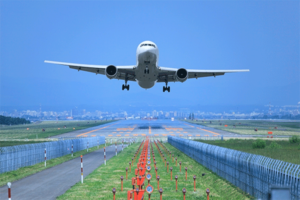Introduction
Welcome to the article, where we will be exploring the complex world of public transport vs. private transport, attempting to decipher which option is really cheaper and more suitable for you. In today's fast-paced world, everyone needs to travel – either to get to work, socialize, or carry out everyday tasks such as grocery shopping. Transportation has always played an essential role in our lives, and as societies and economies continue to grow, so too does the importance of transportation systems.
To understand the debate between public and private transportation, let's first delve into their brief history.
A Brief History of Public and Private Transportation
The Inception of Public Transportation
Public transportation systems can be traced back to the ancient civilizations, where organized means of travelling was necessary to maintain the societal and economic structure. Fast forward to the Industrial Revolution, and we witnessed the birth of steam-powered railways, which revolutionized long-distance travel and fostered the expansion of modern cities. The age of buses came shortly after, providing a more accessible and widespread mode of transportation for citizens in urban areas.
The Advent of Private Vehicles
The automotive industry took the world by storm with the invention of private vehicles in the early 20th century. The introduction of the mass production car – the Ford Model T – led to private automobiles becoming a status symbol and changed how we perceive mobility. As cities expanded and economies grew, so did the desire for personal vehicles, and today, they have become an integral part of our modern lives.
In the next sections, we will dive into cost comparisons and the environmental impact of both public and private transportation, before examining the convenience and accessibility of each option. Finally, we will provide you with some concluding thoughts on which transportation mode is the more economical choice. Keep reading to make an informed decision!
II. Cost Comparison
In order to determine whether public or private transportation is more cost-effective, we must examine the various expenses involved in each method of transportation. This section will delve into the costs associated with owning a private vehicle, using public transportation, and a comparative analysis of both options.
A. Cost of Owning a Private Vehicle
The cost of owning a private vehicle includes various aspects, such as the initial expense of purchasing the vehicle, ongoing maintenance and repair costs, insurance, taxes, fuel, and parking fees.
-
Purchase Price: The cost of a new or used vehicle can range significantly, depending on the brand, model, and year. According to Kelley Blue Book, the average price of a new vehicle in the United States is around $40,000.
-
Maintenance and Repairs: Regular maintenance, such as oil changes, tune-ups, and tire replacements are necessary in order to keep a vehicle functioning optimally. The Bureau of Labor Statistics estimates that car owners spend an average of $1,186 per year on maintenance and repairs.
-
Insurance: Insurance rates depend on factors like age, driving history, location, and type of vehicle. The National Association of Insurance Commissioners reports that the average annual cost of car insurance in the U.S. is $1,190.
-
Taxes and Registration: Vehicle owners must pay annual registration fees and taxes, which vary by state and type of vehicle. These fees can range anywhere from $50 to $200 per year.
-
Fuel: The cost of fuel varies based on location and the fluctuating price of gasoline. The U.S. Bureau of Transportation Statistics reports that the average fuel efficiency of a personal vehicle is 25.1 miles per gallon. Assuming an annual driving distance of 15,000 miles and a gas price of $3 per gallon, the average fuel cost would be around $1,800 per year.
-
Parking: In urban settings, parking fees can add up quickly. Daily parking rates can range from $10 to $50, depending on the location.
B. Cost of Using Public Transportation
Public transportation costs are primarily determined by the modes of transportation available and the frequency of usage. In most cases, public transportation involves buses, trains, subways, and ridesharing services.
-
Buses and Trains: Monthly passes for public transit can range from $50 to $150, depending on the city and type of transit. For example, a monthly pass on the Chicago Transit Authority costs $105 for unlimited travel on buses and trains.
-
Subways: Subway fare prices depend on the location, with major urban centers like New York City charging $2.75 per ride. Commuters can also purchase monthly subway passes for unlimited travel, ranging from $100 to $200.
-
Ridesharing Services: Apps like Uber and Lyft offer variable pricing based on distance, demand, and time of day. A typical rideshare fare can range from $10 to $30.
- Other Costs: Some public transit users may also need to pay for occasional taxis or bike-sharing services to supplement their transportation needs.
C. Comparative Analysis of the Cost of Each
Taking the above factors into consideration, let's compare the annual costs associated with both private and public transportation.
| Expense Category | Private Vehicle Expense | Public Transportation Expense |
|---|---|---|
| Purchase Price | $40,000 | $0 |
| Maintenance & Repairs | $1,186 | $0 |
| Insurance | $1,190 | $0 |
| Taxes & Registration | $100 | $0 |
| Fuel | $1,800 | $0 |
| Parking | $1,200 (assuming $10 daily) | $0 |
| Monthly Transit Fares | $0 | $1,260 (assuming $105 monthly) |
| Rideshare Expenses | $0 | $540 (assuming $45 monthly) |
| Total Annual Cost | $45,476 | $1,800 |
This comparison demonstrates that public transportation, in general, is significantly cheaper than owning a private vehicle. However, it is important to note that these cost estimates may vary depending on individual circumstances and location. In the next section, we will explore the environmental impact of each transportation option, as well as their convenience and accessibility parameters.
III. Environmental Impact
When considering the choice between public and private transportation, it's crucial to discuss the environmental impact of both options. In this section, we'll explore the carbon footprint of private vehicles and public transportation, and provide a comparison study to help you make an informed decision.
a. Private Vehicle Carbon Footprint
The majority of private vehicles rely on fossil fuels, such as gasoline and diesel, which contribute significantly to greenhouse gas (GHG) emissions. According to the EPA, light-duty vehicles, such as cars and trucks, contributed to 59% of total transportation GHG emissions in 2019.
Apart from fuel, other factors that contribute to a private vehicle's carbon footprint include:
-
Manufacturing and disposal: The process of manufacturing and disposing of vehicles produces GHG emissions. In fact, around 10% to 20% of a car's lifetime emissions come from its production.
-
Tire and brake wear: As a vehicle's tires and brakes wear down over time, they release small particles into the air, further contributing to environmental pollution.
-
Idling and congestion: Traffic jams force cars to idle, which can cause inefficient fuel usage and increase emissions.
b. Public Transportation Carbon Footprint
Public transportation, such as buses and trains, typically generates less greenhouse gas emissions per passenger-kilometer traveled compared to private vehicles. In fact, studies have shown that public transit can be up to ten times more carbon efficient than private vehicles.
The lower carbon footprint of public transportation can also be attributed to factors like:
-
Improved fuel efficiency: Newer public transportation vehicles are equipped with fuel-efficient technologies, enabling them to emit fewer GHGs. Additionally, electric buses and trains are becoming more common, which significantly reduce emissions.
-
Higher occupancy rates: Public transportation can transport a higher number of people compared to private cars, leading to decreased per-passenger energy consumption and emissions.
-
Encouragement of eco-friendly behavior: Using public transportation often encourages people to walk or bike more, which further reduces the overall environmental impact.
c. Comparison Study
Based on the information above, it's evident that public transportation has a much lower environmental impact than private vehicles. However, the true environmental savings depend on various factors such as location, transportation type, and individual usage habits.
For example, if you live in a city with a well-developed public transportation system, the environmental benefits of using public transit compared to owning a private vehicle are likely to be significant. On the other hand, if you live in an area with limited or no public transportation options and are reliant on carpooling or using a fuel-efficient personal vehicle, the environmental benefit may not be as substantial.
Ultimately, the environmental impact of your transportation choice will depend on your individual circumstances and conditions in your area. Yet, it's clear that, in general, public transportation has a lower carbon footprint and is more environmentally friendly compared to private vehicles.
Conclusion
When assessing the cost, environmental impact, and accessibility of public transport versus private transportation, it's evident that both options have their advantages and disadvantages. However, taking into account the current pressing need to reduce carbon emissions and combat climate change, opting for public transportation in areas where it's readily available is not only beneficial from an environmental perspective but can also be an economical choice. Furthermore, if the availability of public transportation is limited, it's worth considering eco-friendly alternatives like carpooling or investing in energy-efficient vehicles to minimize your carbon footprint.
IV. Convenience and Accessibility
a. Availability of Public Transportation
The accessibility and convenience of public transportation are major contributing factors to its usage and value. Public transportation is readily available in most urban areas, with frequent buses, trains, and trams servicing a range of neighborhoods and destinations. This level of availability allows those without private vehicles to move around their cities with relative ease, as well as those who choose not to use private transportation for environmental or cost reasons.
However, the availability of public transportation may vary significantly depending on the location. In rural areas, public transport options are often limited, with less frequent services and fewer routes. Additionally, the quality and timeliness of service may also be unsatisfactory in certain regions. Before committing to a city's public transportation system, it's essential to research the reliability and availability of services in the specific area you live or work, as accessibility can vary greatly.
b. Benefits and Limitations of Private Vehicles
Owning a private vehicle presents its own set of benefits and limitations in terms of convenience and accessibility. With your car, you have the freedom to travel at any time, without worrying about bus or train schedules. This makes private vehicles especially useful for emergencies, time-sensitive plans, or long-distance travel. Additionally, those with their vehicles may find it easier to run errands and transport bulky items, such as groceries or furniture.
On the other hand, owning a private vehicle can prove to be less convenient in some instances. Traffic jams, parking fees, and city restrictions can all worsen the experience of driving in urban areas. Furthermore, finding parking spaces close to popular destinations is often a daunting task, and, in some cases, a private vehicle may not be allowed access to certain city centers or areas. Moreover, private vehicles usually have a limited passenger capacity, making it difficult to transport larger groups.
c. Convenience and Accessibility Comparison
When comparing the convenience and accessibility of public transportation and private vehicles, the decision often comes down to factors such as location, lifestyle, and personal preferences. Public transportation tends to be more accessible, reliable, and affordable within metropolitan areas, while private vehicles may offer more freedom and flexibility to customize routes and travel times. A few points to consider when evaluating the convenience and accessibility of each option are:
-
Location and Infrastructure: Urban dwellers with well-developed public transportation systems might enjoy more convenience using the public system, while those living in rural areas or suburbs may find private vehicles more practical.
-
Lifestyle and Commute: Depending on your job location, working hours, and personal schedule, one option might suit your daily routine better than the other. Additionally, your social and family life may also factor into determining the most accessible and convenient transportation choice.
-
Time Management: Public transportation may require passengers to adhere to specific schedules, which could cause delays during off-peak hours or disruptive incidents. In contrast, private vehicles generally provide more flexibility in terms of departure and arrival times.
-
Environmental Impact: Individuals concerned with their ecological footprint and emissions may choose to rely on public transportation over private vehicles due to the reduced environmental impact.
-
Safety and Comfort: Public transportation varies in degrees of safety, cleanliness, and comfort, while a private vehicle generally offers a consistent and controlled environment to travel in.
It's All About Finding the Right Balance
In conclusion, choosing between public and private transportation depends on several factors such as geographical location, lifestyle, and personal preferences. While public transportation offers economical and ecological benefits, as well as widespread accessibility in urban areas, owning a private vehicle can provide more freedom and flexibility, especially in rural locales. When making the decision between these two options, ultimately consider your unique circumstances, values, and priorities, to find the transportation solution that best meets your needs.
V. Weighing the Advantages and Disadvantages of Public and Private Transportation
A. Recap of Cost, Environmental, and Accessibility Comparisons
Before we reach a verdict on whether public or private transportation is the cheaper alternative, let us recap what we've discovered so far. To make a fair evaluation, we looked at three main factors: cost, environmental impact, and convenience/accessibility.
In terms of cost, we identified the various expenses associated with owning a private vehicle, such as purchasing, maintaining, insuring, and fueling a car. Conversely, we explored the costs of using public transportation, which includes fares, tickets, or passes. With a well-executed comparative analysis, the numbers revealed how each form of transportation weighs on our pockets.
When considering the environmental impact, we assessed the carbon footprint of private vehicles and public transportation. Private vehicles generally produce more carbon emissions than public modes of transport. With increasing global concern for the environment and climate change, favoring one over the other must ultimately factor into the decision-making process.
Lastly, we examined the convenience and accessibility of both options. We discussed public transportation's availability, wherein the proximity and predictability of buses or trains can affect how quickly we reach our destinations. Meanwhile, we delved into the benefits and limitations of private vehicles, giving thought to factors such as traffic, parking, and the freedom to choose routes at our own convenience.
B. Final Thoughts: Choosing Between Public and Private Transportation
Identifying a clear winner in the debate between public and private transportation is challenging. Eco-Friendly Transportation Solutions Near You might ease that decision but approach with the understanding that the best choice largely depends on individual circumstances, preferences, and priorities.
Financially speaking, using public transportation may indeed be cheaper than owning and maintaining a private vehicle. Public transit can save commuters money on costs such as fuel, insurance, and maintenance while mitigating the hassles of parking and traffic. Moreover, public transportation contributes to a more sustainable and environmentally-friendly future due to lower carbon emissions.
On the other hand, private vehicles offer greater control and flexibility in terms of travel. With personal transport, you can choose your route, enjoy privacy, and have the freedom to alter your schedule as needed. Additionally, those living in areas with limited access to public transport may find owning a private vehicle to be a necessity.
In conclusion, it is essential to weigh each mode of transportation's pros and cons carefully. Numerous factors come into play beyond expense, such as environmental concerns and your unique lifestyle needs. While public transport may be the cheaper alternative in monetary terms, private vehicles offer valuable advantages when it comes to comfort and accessibility. Ultimately, you should choose the option that aligns best with your individual preferences, priorities, and resources.
<h2>Frequently Asked Questions</h2>
<h3>1. How do the costs of owning a private vehicle compare to using public transportation?</h3>
<p>Owning a private vehicle has various costs involved, such as purchase, insurance, maintenance, and fuel expenses. On the other hand, public transportation usually has fixed ticket prices that cover all operational costs. A comparative analysis must consider all the expenses associated with each transport mode to make a fair comparison.</p>
<h3>2. Are there significant differences in the carbon footprint of public and private transport?</h3>
<p>Yes, there are notable differences in the environmental impact of public and private transport. Private vehicles often emit more carbon dioxide and contribute to air pollution, while public transportation systems tend to have a lower carbon footprint per passenger due to better fuel efficiency and higher occupancy rates.</p>
<h3>3. What factors should I consider when deciding between private and public transport in terms of convenience and accessibility?</h3>
<p>In terms of convenience and accessibility, consider the availability of public transportation in your area, the frequency of services, and the distance to public transport stations. Additionally, weigh the benefits and limitations of owning a private vehicle, such as parking availability and traffic conditions. Each individual’s needs and preferences will determine the most appropriate choice.</p>
<h3>4. Can using public transport save me money compared to owning a private vehicle?</h3>
<p>Using public transport can be more economical than owning a private vehicle, depending on factors such as location, frequency of use, and travel distances. When comparing costs, it is essential to consider all expenses associated with private vehicle ownership and compare them to public transport fares over time.</p>
<h3>5. Is public transportation generally more environmentally friendly than private vehicles?</h3>
<p>Yes, public transportation is generally more environmentally friendly than private vehicles due to lower carbon emissions per passenger and more efficient fuel consumption. However, it is essential to consider the specific public transport modes and private vehicle types when comparing their environmental impacts.</p>
<h2>Conclusion</h2>
<p>Deciding between public and private transport is a complex decision and depends on individual preferences and requirements. The comparison extends beyond costs, as environmental impact, convenience, and accessibility are essential factors to consider. Ultimately, understanding the trade-offs of each transport mode will help you make the best choice for your lifestyle and needs.</p>
<script type=”application/ld+json”>
{
“@context”: “https://schema.org”,
“@type”: “FAQPage”,
“mainEntity”: [{
“@type”: “Question”,
“name”: “How do the costs of owning a private vehicle compare to using public transportation?”,
“acceptedAnswer”: {
“@type”: “Answer”,
“text”: “Owning a private vehicle has various costs involved, such as purchase, insurance, maintenance, and fuel expenses. On the other hand, public transportation usually has fixed ticket prices that cover all operational costs. A comparative analysis must consider all the expenses associated with each transport mode to make a fair comparison.”
}
}, {
“@type”: “Question”,
“name”: “Are there significant differences in the carbon footprint of public and private transport?”,
“acceptedAnswer”: {
“@type”: “Answer”,
“text”: “Yes, there are notable differences in the environmental impact of public and private transport. Private vehicles often emit more carbon dioxide and contribute to air pollution, while public transportation systems tend to have a lower carbon footprint per passenger due to better fuel efficiency and higher occupancy rates.”
}
}, {
“@type”: “Question”,
“name”: “What factors should I consider when deciding between private and public transport in terms of convenience and accessibility?”,
“acceptedAnswer”: {
“@type”: “Answer”,
“text”: “In terms of convenience and accessibility, consider the availability of public transportation in your area, the frequency of services, and the distance to public transport stations. Additionally, weigh the benefits and limitations of owning a private vehicle, such as parking availability and traffic conditions. Each individual’s needs and preferences will determine the most appropriate choice.”
}
}, {
“@type”: “Question”,
“name”: “Can using public transport save me money compared to owning a private vehicle?”,
“acceptedAnswer”: {
“@type”: “Answer”,
“text”: “Using public transport can be more economical than owning a private vehicle, depending on factors such as location, frequency of use, and travel distances. When comparing costs, it is essential to consider all expenses associated with private vehicle ownership and compare them to public transport fares over time.”
}
}, {
“@type”: “Question”,
“name”: “Is public transportation generally more environmentally friendly than private vehicles?”,
“acceptedAnswer”: {
“@type”: “Answer”,
“text”: “Yes, public transportation is generally more environmentally friendly than private vehicles due to lower carbon emissions per passenger and more efficient fuel consumption. However, it is essential to consider the specific public transport modes and private vehicle types when comparing their environmental impacts.”
}
}]
}
</script>







